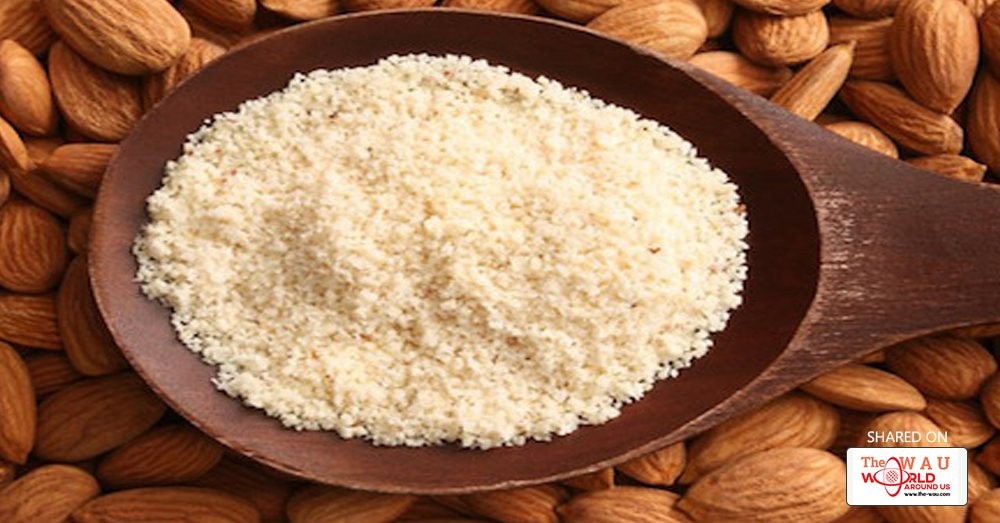When you go grain-free, you have to get creative to keep enjoying the foods you love. Most grain-free goodies are made with the same ol’ flours, but there are actually some really great alternatives to almond flour and coconut flour. I bet you haven’t even heard of some of them!
While an optimal diet should consist mostly of fresh produce and healthy meats & eggs, sometimes you just want to enjoy a baked treat or even a grain-free bread. There’s nothing wrong with indulging, if you do it right!
Grain-Free Baked Goods
Thankfully, it’s really easy to remake many of our favorites like chocolate chip cookies and pancakes with grain-free flours like almond and coconut. But what if you’re tired of almond flour and coconut flour … or worse, what if you can’t eat them because of an allergy or intolerance?
Coconut and almond flours can be problematic for some people due to health reasons, or taste and texture preferences in some recipes.
Popular Grain-Free Flours
Let’s look at the problems with popular grain-free flours, then we’ll highlight some great alternatives to almond flour and coconut flour.
Almond Flour
One of the most frequently used flours in grain-free baking and cooking, almond flour has a great texture that can mimic all-purpose flour in many recipes, and a neutral flavor that lends itself well to both sweet desserts and savory dishes.
However, almond flour can be problematic for a lot of people, particularly those with nut allergies. Other reasons to limit almond flour include:
- Almond flour contains A TON of almonds per serving. Just one cup of almond flour contains about 90 almonds. 90! No one would eat 90 almonds in one sitting, and even if a recipe served multiple people, we’re still talking about more almonds than you would eat if you were eating them whole.
- Almond flour is high in omega 6 fats. We’ve talked about why it’s important to eat a balanced ratio of omega 3 and 6 fats. Today’s standard American diet is full of omega 6 fats, while omega 3 fats get largely ignored, much to our detriment. Almonds are high in omega 6 fats, and have little to no omega 3 fats, making them a source of inflammation for some.
- The proteins in almond flour can be difficult for some people to digest.
- Non-sprouted almond flour contains some of the same problematic components that grains do, inhibiting proper digestion, and robbing your body of nutrients.
For many people almond flour is great on occasion, and in moderation, but some people just don’t tolerate it well due to the above reasons, which leads us to another popular grain-free flour: coconut. It is also pretty hotly debated: read the Paleo Mom’s take here and Empowered Sustenance’s opinion here.
Coconut Flour
Perfect for cakes and pancakes, coconut flour is a great grain-free option. However, there are a few reasons to limit it, including:
Coconut flour is very fibrous, which may be problematic for those with SIBO or other gut infections or imbalances.
Some people just don’t like the flavor of coconut flour, which can be overpowering in some recipes.
Coconut flour is very dense and requires a lot of eggs for baking.
Coconut flour is a good option, if you tolerate it, but if you’re wondering what else you can use, here are some additional suggestions.
Alternatives to Almond Flour and Coconut Flour
Here are some great alternatives to both almond and coconut flour, plus a few recipes to get started.
Cassava Flour
The new darling of the paleo world, cassava flour is hitting all the right notes: grain-free, nut-free, and it behaves much like all-purpose flour in many recipes. Made from the tropical cassava root, cassava flour is simply peeled, dried, and ground.
While cassava is starchy and certainly not low-carb, it is a great alternative to almond flour on occasion if you’re wanting to make a nut-free recipe (important if your kids attend a nut-free school).
Note: Cassava flour is not the same as tapioca flour, which also comes from the cassava root, but is more processed and refined and doesn’t yield quite as pleasing results.
Here are a few reasons to give cassava flour a try:
- a good source of carbohydrates
- contains resistant starch, which is important for feeding the good bugs in our guts
- allergen-friendly and doesn’t contain problematic proteins like some flours, making it a perfect choice for the AIP (autoimmune protocol) diet
- totally gluten- and grain-free
Even with these benefits, cassava flour should be used occasionally, as a treat, as too much starch in the diet can feed bad gut microbes.
Cassava Flour Recipes
1. Cassava flour sugar cookies – Naturally sweetened and grain-free, these healthy cookies are the perfect treat for your kiddos (or yourself!).
2. Cassava flour tortillas – Breakfast burritos, almond butter and banana roll-ups, and quesadillas are a reality again with these grain-free tortillas. My friend Heather once made this when we were visiting her house and I can vouch for their amazingness!
3. Molten chocolate cake with coconut whipped cream – No introduction necessary; go give this impressive dessert a try.
4. Cassava flour pizza dough – Because my kids never get tired of a good pizza.
5. Chocolate chip cookies – These grain-free, naturally sweetened cookies are perfect for a treat.
6. Old-fashioned buttermilk biscuits – Have your biscuit and eat it too.
7. Paleo soft pretzels – I plan to get this fun snack on my to-do list STAT.
8. Grain-free saltine crackers – Not just for morning sickness, saltines make a great snack alone or paired with cheese.
Plantain Flour
If you’ve ever grabbed a bunch of plantains thinking they were bananas, you were probably sorely disappointed by their bland taste and firm texture. However, in baking, plantain is a great alternative to almond flour and coconut flour. I hate bananas but can handle plantains … this is the plantain flour I tried.
Like cassava flour, plantain flour provides carbs and resistant starch, and is AIP-friendly. Use it to create everything from tortillas to doughnuts.
Plantain flour also provides:
- fiber
- vitamins C, B6, and A
- potassium
- magnesium
- and iron
Like coconut flour, plantain is dense and fibrous and may need extra moisture.
Plantain Flour Recipes
1. Paleo plantain flour pancakes – I’m always on the lookout for good paleo pancake recipes. This one looks nice and fluffy.
2. Plantain tortillas – These tortillas are not only grain-free, but they’re AIP-friendly too.
3. Chocolate chip cookies – These plantain chocolate chip cookies are also AIP-friendly, and safe to take to nut-free schools.
4. Plantain sandwich rounds – Perfect for when you just really want a sandwich! Stuff these buns with your favorite “sammich” contents and chow down.
5. AIP chocolate cake – This cake is not only totally allergen-friendly but also sneaks in a vegetable ingredient.
6. Blueberry muffins – These muffins are a fun alternative to grain-free breakfast staples like bacon and eggs.
Cricket Flour!?
No, I’m not kidding. crickets are the new kale, so I would be remiss if I didn’t tell you about this alternative to almond flour for everything from baked goods to protein bars.
Cricket flour is packed full of protein, rich in B12, and, like gelatin, provides all the essential amino acids our bodies need.
Note: If you’re allergic to shellfish, cricket flour may not be for you, because crickets are actually crustaceans.
If you’re feeling adventurous, grab a bag of cricket flour and try one of these recipes:
1. Cricket flour pancakes – Paired with chia seeds, cricket flour makes these pancakes a nutrition powerhouse.
2. Protein smoothie – Add a teaspoon of cricket flour to your favorite smoothie to bump up the protein.
3. No-bake carrot cake protein bites – A perfect post-workout snack, or a treat for the kids, these protein bites are naturally sweetened and full of anti-inflammatory ingredients.
Share This Post












